In-depth coronavirus interview with Sec. Alex Azar, Surgeon General Jerome Adams, Dr. Deborah Birx
WASHINGTON (NewsNation Now) — Experts have warned about a second wave of coronavirus cases in the fall.
NewsNation sat down at the White House complex for an in-depth interview with three of the top officials on the front lines of America’s fight against the COVID-19 pandemic: Dr. Deborah Birx, the White House Coronavirus Response Coordinator, Health and Human Services Secretary Alex Azar and Surgeon General Jerome Adams.
Watch Marni Hughes’ full interview in the player above.
This is the first time these top health three health leaders fighting the coronavirus pandemic have sat down for an interview together.
In the interview, Secretary Azar addressed the safety of the vaccine and also the process to distribute it in the months ahead.
Hughes also asked the three about the conflicting guidelines coming out of the White House and other top health organizations and how the U.S. mitigates the spread of COVID-19.
Eight months into the pandemic and the U.S. is seeing a strong increase in new cases, with levels approaching those the country recorded over the summer.
Infections and hospitalizations are on the rise across the country with the death toll now approaching 221,000, the highest in the world. America’s number of infected people leads the world as well.
The disease has disrupted life for all of us since the spring, with fears that the fall and winter could be even worse.
Health officials reported more than 58,000 cases on Tuesday.
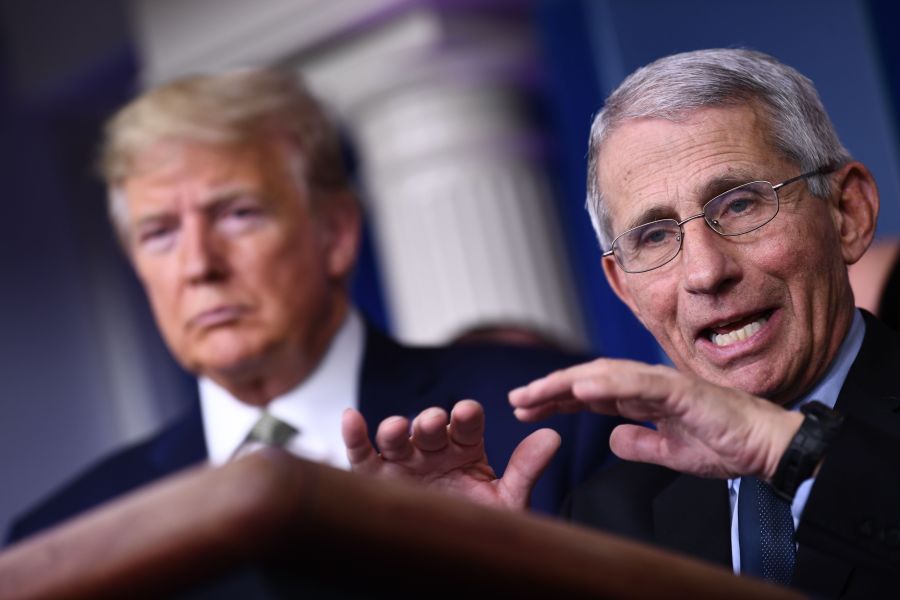
Back in August, Dr. Anthony Fauci said the U.S. would need to bring daily new cases down to 10,000 or fewer by September to get a handle on the pandemic before the fall.
All of this comes amid concerns about the safety of a coronavirus vaccine, and whether the White House has pressured health officials to bring one to market.
“We are getting mixed messages and I would like to leave the politics out of this because I think the American people want to hear from each of you on the science, on your medical backgrounds, on your experience,” Hughes said at the beginning of the interview. “With that said, the president has said ‘the virus is going away;’ we recently have seen back-and-forth between the president and your colleague Dr. Fauci, Dr. (Scott) Atlas has also spoken, he is a member of the task force, about conflicting signals about wearing masks. The CDC guidelines have also changed in recent weeks.”
“At the end of the day, the American people just want to know what’s going on and who are we supposed to listen to?”
Marni Hughes
“Our strategy is clear, which is we want to reduce the number of cases, we want to reduce the number of hospitalizations and we want to reduce the number of fatalities that result from coronavirus because we as the Surgeon General said, are weeks to months away from monoclonal antibodies allow us to treat and prevent the disease, as well as vaccines will enable us to as the President said, move beyond COVID, eventually, and we need to bridge to that,” Azar said. “We need the American people to hang in there with us and our message about what they need to do is very clear: it’s wash your hands, watch your distance, wear your face covering when you can’t watch your distance, out of settings and you can’t do those things, and especially right now.”
Hughes also asked the health leaders about going back to the classroom, pandemic fatigue and their personal struggles through COVID-19.
For transparency: Hughes, reporting from the White House lawn, said she didn’t undergo a COVID-19 test and didn’t have her temperature checked on Tuesday before the interview.
However, Hughes said NewsNation’s crew didn’t enter the White House and the interview was conducted in a building adjacent to the White House.
“We all were wearing masks, and once the interview started, I removed my mask so that you at home could hear me clearly,” Hughes said. “We were socially distant, and we took special care to make sure that there was enough space between us.”
All three of the health experts decided to keep their masks on for the interview.

Interview Transcript
Mixed messaging from the White House
Marni Hughes: We are getting mixed messages and I would like to leave the politics out of this because I want to hear from each of you on the science on your medical backgrounds and your experience. With that said the President has said the virus is going away. We recently have seen back and forth between the President and your colleague Dr Fauci in the news. Dr. Atlas has also spoken. He is a member of the task force about conflicting signals about wearing masks, the CDC guidelines have also changed in recent weeks. At the end of the day, the American people just want to know what is going on and who are we supposed to listen to?
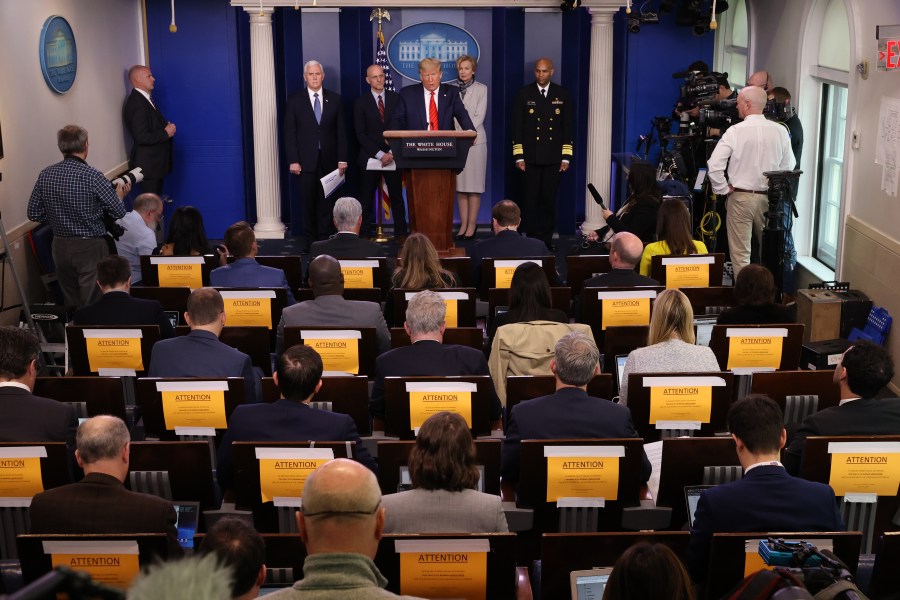
Secretary Alex Azar: Our strategy is clear, which is we want to reduce the number of cases, we want to reduce the number of hospitalizations and we want to reduce the number of fatalities that result from coronavirus because we as the Surgeon General said, are weeks to months away from monoclonal antibodies allow us to treat and prevent the disease, as well as vaccines will enable us to as the President said, move beyond COVID, eventually, and we need to bridge to that. We need the American people to hang in there with us and our message about what they need to do is very clear, it’s wash your hands, watch your distance, wear your face covering when you can’t watch your distance, out of settings and you can’t do those things, and especially right now.
Dr. Deborah Birx: So when you have a spectrum of disease from no symptoms to fatalities, it’s very hard for the American people to understand that, because we’re used to things looking the same. We’re used to people getting the flu going to bed getting chills feeling terrible. We’re used to that. It’s hard for us to comprehend that more than 50% of the people cannot have any symptoms and others could die from this disease. And so that’s why it’s really important for people to know as the secretary, someone in this room right now, could be asymptomatic and positive, not know, and be here because they don’t have symptoms. And so really getting that message out, because I know you… doesn’t mean you don’t have the virus, I think is really critically important, but I understand that’s difficult to understand because it’s always difficult to know that spectrum of disease from no evidence of disease to people succumbing to the exact same virus.
“It’s really important for people to know… someone in this room right now could be asymptomatic and positive, not know, and be here because they don’t have symptoms.”
Dr. Deborah Birx, Coronavirus Response Coordinator for the white house Coronavirus task force
Hughes: And what I’m hearing from you is a unified message which I believe the American people do seek out. However, the question is there have been mixed messages from those in leadership and we want to clarify and confusion, so anything you’d like to add on that to add clarity and add accuracy?
Azar: I will just be very clear I am the President’s health secretary. I speak for him. And I’m telling you, our strategy is to reduce cases, reduce hospitalizations, reduce mortality. Wash your hands. Watch your distance, wear your face coverings when you can’t watch your distance, and stay out of settings when you can’t do those things. That is the message of this administration and the strategy of this administration for dealing with the coronavirus and that is from noticed from the President, through me.
“Wash your hands. Watch your distance, wear your face coverings when you can’t watch your distance, and stay out of settings when you can’t do those things.”
ALEX AZAR, UNITED STATES SECRETARY OF HEALTH AND HUMAN SERVICES
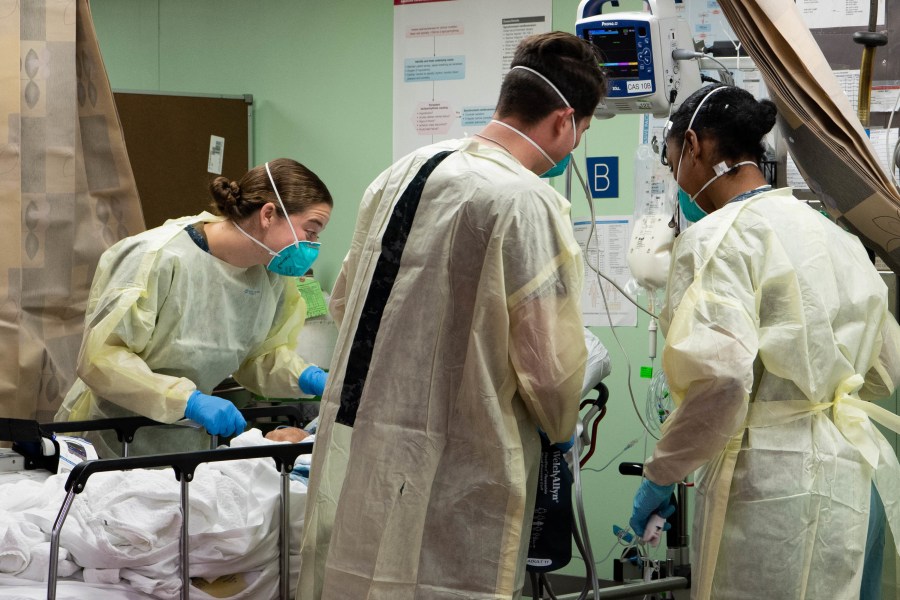
Dr. Jerome M. Adams: When I talk to people and they asked me about politics and mixed messages. I really try to help them understand that what many people view as politics and mixed messages comes down to two things. Number one comes down to this debate between the reopening and mitigation efforts. And I will say to the American people. That’s a false choice, and you need to reject that choice. You need to understand that we can safely reopen. We’ve seen that happen in New York City, where they drove down their productivity rates to under 1% for most of the summer, worst in the world to under 1%. You seen that in Arizona, if you want a red state, where they were the worst in the country or among the worst in the country in the summer. Within a few weeks, they drove down their positivity rates, and became a green state. It is a false choice to feel that you gave to choose between reopening and mitigation efforts. We don’t want to shut down. But the way, you stay open is by following the three W’s washing your hands wearing a mask and watching your distance. Also, when people talk about politics and mixed messages, I think that they are hearing this tension between optimism about how far we’ve come, but also pessimism or realism about the challenges that lie ahead. That again is a false, false choice. We need to understand we’ve come incredibly far. Mortality rates are much lower than what they were. We have better drugs, we have over 114 million tests that have been done in this country. We’ve put testing in communities of color in vulnerable communities 70% of our federally sponsored community-based testing sites are in communities of color. CDC now collects data democratically based on race and ethnicity, that they’ve never done before, we’ve made a lot of progress and people need to understand that, but we also need to be realistic about the challenges that lie ahead as we go into the winter and we need to stay the course because we are almost there.
The vaccine: When will it be ready and will it be safe?
Hughes: The vaccine is critical – I’m not telling you anything you don’t already know. The biggest question that I hear from people is when will the vaccine be ready and will it be safe for me and my family to take?

Azar: So in terms of the vaccine timelines, we have two products that are almost fully enrolled in clinical trials Pfizer and Moderna’s vaccines. We have six vaccines total that we have invested in or contracted with, four in phase three final stage of clinical trials — these two that are almost fully enrolled. We can’t predict when we’ll get data from them, because, unlike just a therapeutic where you have someone who’s sick and within a couple of days you can look at a clinical outcome to see if they’ve gotten better and gotten out of the hospital, with the vaccine you’re looking at preventing them getting the virus or lessening the disease progression in them if they do get the virus. And so that means you vaccinate thousands and thousands of people in each of these trials. 30,000 people half of them get the vaccine, half of them get a placebo and you have to then wait until a certain number of people get coronavirus and symptoms in that trial.
When we get that data that will be an independent process, there’ll be an independent, it’s called the data and safety monitoring board that will determine that pre-specified statistical endpoints have been met. That will then go to the drug companies and the FDA, the drug companies will determine whether the data meets their ethical standards to submit for FDA approval will go to the FDA. FDA will consider that data against public guidance that they’ve already laid out saying what the standards are to hold that to. They will use a public advisory committee process to get external input and the FDA career scientists will make the call as the whether the vaccine meets the FDA’s legal and regulatory science and data standards for approval.
So, we don’t know the timing of when we’ll see the data but Pfizer CEO of the world’s leading global biopharmaceutical company has publicly said that they think that we can see data from their trial as early as late October, so next week. And they have said that as once they get that data will take some time to clean up the data and be ready to submit and they would submit by late November. Stop and think about that. That’s 10 months from the entry of this virus to the United States. This is historic and unprecedented achievement thanks to President Trump’s leadership and vision of “Operation Warp Speed.”
Hughes: No one will deny that 10 months is fast for a vaccine to come to market, but there is a saying you can’t rush science. So can you address those concerns that are valid that people do have given what you’ve already stated about the process and the approval.

Dr. Birx: I think it’s really important for everyone to understand, the reason this is faster is because they moved everything consecutively. In many cases, you have large delays in between… but pharmaceutical companies need to make money. And so they investigate what’s the utility of that drug or vaccine will be. Will it be acceptable? How will it be used? And then they determine the market impact of that vaccine. That was all taken off the table, because the federal government said if this vaccine is safe and effective, we’re gonna make the decision right now to manufacture it. And so no shortcuts were taken in the science and the safety. What it did do was cost a lot more, and I think that was an investment made by the federal government to say it is worth it with this kind of pandemic to make to those kind of investments.
Dr. Adams: There were horrific things done to people in this country, particularly people of color in the name of science, historically. We need to acknowledge that. We need to help everyone understand that there are protections now in place. The Office of Human Research Protections which the Secretary (Azar) oversees. Independent data safety monitoring board which has unblinded the data before it even gets to the FDA and FDA process which is recognized around the globe is the safest in the world. In the safest of all time. And probably the most reassuring thing I can tell the Americans, is that as a Black man, the Surgeon General of the United States, as a practicing physician as someone with a Master’s in Public Health – I will be getting a COVID vaccine when they tell me it’s been authorized or approved, and that I can get one, and my family will get it a COVID vaccine when they are told that they can get one because I trust the process. We’re in the midst of a social justice movement right now. I think one of the greatest injustices in the world are the people who are pushing misinformation out there that is causing minorities in particular to disproportionately be harmed by vaccine-preventable diseases. 50% of Americans, get a flu shot in a given year. Only 40% of Hispanics and African Americans and Native Americans get their flu shot in a given year. That results in tens of thousands of people of color, dying every year because of a lack of vaccine confidence, because we haven’t done enough to make it easier.
“Probably the most reassuring thing I can tell the Americans, is that as a Black man, the Surgeon General of the United States, as a practicing physician as someone with a Master’s in Public Health – I will be getting a COVID vaccine when they tell me it’s been authorized or approved, and that I can get one, and my family will get it a COVID vaccine when they are told that they can get one because I trust the process.”
JEROME ADAMS, SURGEON GENERAL OF THE UNITED STATES
What should parents do? Learning in the classroom or virtual
Hughes: I have three kids at home right now they are remote learning. I would like them back in the classroom. They would like to be back in the classroom, but to be honest with you as a parent, I don’t yet feel comfortable sending them back to the classroom. What is the right answer? What should I do and what should other Americans do when making this difficult decision?

Azar: They outta have the opportunity to be back in the classroom, almost every Western democracy has their kids back to their K-12 schooling, and the United States should be the same. We have the public health tools to work this problem, and keep our kids safe, keep our staff and our faculty safe. It’s the basics of public health we talked about washing your hands, watching the distance, wearing your face coverings when you can’t watch your distance. We can configure our schools in ways that create social distance, we can protect the kids by having the teachers rotate between rooms, we can bring meals to the kids in class to prevent congregate settings like cafeterias or assemblies or auditoriums. You can cohort with the kids in terms of transportation to and from school. There is a very important and real cost to kids being kept from a physical learning environment. It’s not just the importance of their intellectual development but there’s also physical development, mental health development.
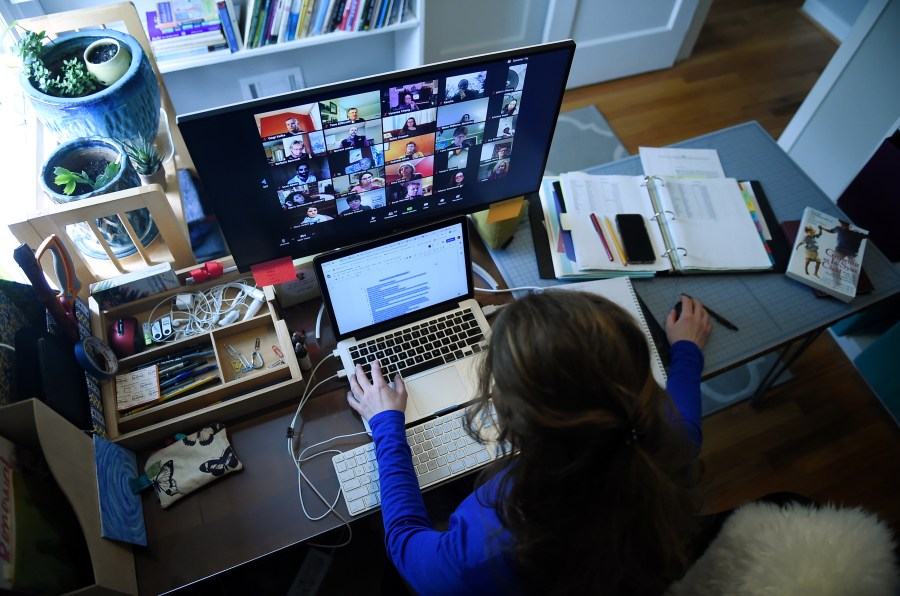
So many of our kids get their basic medical and nutrition services in a school-based setting, and they’re being denied that. Even some of the abuse detection systems that we have depend on that physical environment to look for signs and symptoms of child abuse or neglect in those. So, there’s so many costs that come from not being in the physical environment. We can do it when we put our mind to it. Every individual parent needs to make the decision and have the choice of fate for their own individual circumstances if their family or vulnerable household numbers shouldn’t go back to school that should be a choice that is respected for them. But we also all have the opportunity for kids to be back to the physical school about safe for them and their faculty.
Hughes: Dr. Birx, I know you’ve spent a lot of time at colleges and universities, are we doing enough to mitigate the virus in those settings as well, given what we have learned about the pandemic in the last 10 months?
Dr. Birx: If you look at the data in these colleges that have mandatory testing either twice a week or once a week, the colleges have been testing just the symptomatic students and doing asymptomatic surveillance, wastewater testing, there was an initial peak as people got together and then the middle group and majority of students have really been following the guidelines and those infection rates that were at one time maybe 500 students are down to under 50 showing that even eight weeks in, eight weeks in, the students are following the guidelines and making these sacrifices.
Personal impact of the coronavirus pandemic
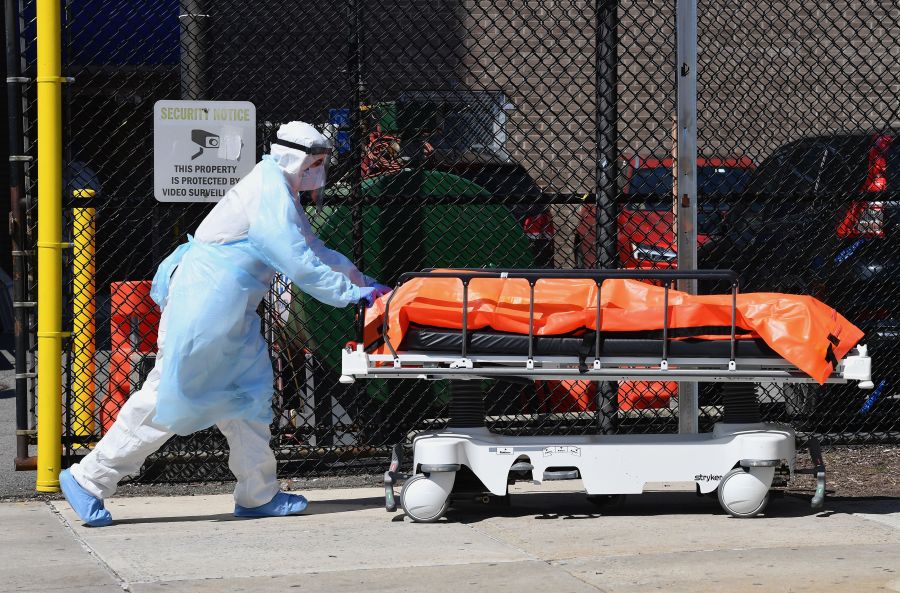
Hughes: According to Johns Hopkins as you know, we are at 8,000,201+ confirmed cases, 220,020+ deaths. These are more than numbers, these are people’s lives. These are families that have been torn apart. I’d like to know from each of you. What is your personal reaction to the state of the virus, and the toll that it has taken thus far?
Dr. Adams: I think about family members and friends of mine personally who have had the virus. Fortunately for me, none of them have succumbed. But I think that reflects a very real difference in outcomes if they have gotten it in March or April versus getting it now, with Remdesivir, with steroids where many more people are going home to see their families again and where length on hospitals stays are much shorter. But I also talked about my three kids. 16, 14, 10-years-old at home right now, doing virtual learning, and really having a significant, I’d say diminishment of their school experience because of this virus. I think about my wife, who had a cancer diagnosis delayed, and who’s undergoing cancer treatment right now. I hope she does well. But again, there are real, negative, negative outcomes for people who are living through this pandemic. Apart from the actual virus itself and so what I want people to understand that we really have to get the virus, under control, not just for the sake of the virus, but the sake of the other negative outcomes — mental health, school, delayed diagnosis of other diseases. And I want people to also understand, we are weeks away from having a vaccine. And all we have to do is stay the course, we’ve got to follow my three W’s: wash your hands, wear your mask and watch the distance. This is not political. I consider it patriotic to wear a mask because you’re protecting your country and you’re protecting our ability to stay open, and I really hope we can get away from this idea of opening versus health because the way to open and the way to stay open is by promoting health.
“I think about my wife, who had a cancer diagnosis delayed, and who’s undergoing cancer treatment right now.”
Jerome Adams, Surgeon General of the United StateS
Azar: There’s a very real human toll from a global unprecedented pandemic like the coronavirus. But I think about what would have happened had the president not taken such early decisive aggressive, leadership, such as shutting down travel with China, shutting down travel with Europe and then the 45 days to slow the spread that was truly unprecedented action by any president, and every step of the way, every step of the way the President was criticized for being too aggressive being too strong taking too many measures to protect the American people. We know people are tired, they’re fatigued from the mitigation steps… they’ve been kept away from work, school, from worship from health care even. We need them to just take the simple steps. Wash your hands. Watch your to distance, wear your face coverings when you can’t watch your distance, avoid settings where you can’t do those things, because we’re bridging really to a very near period where we will have next-generation therapeutics, monoclonal antibodies that will allow us to prevent treat the disease, and vaccines that will enable us eventually to get out of this situation.
Dr. Birx: Since March as we tracked it up through the Northeast through Chicago through Detroit and into New Orleans. I mean, seeing the level of stress on healthcare workers, the families, the inability to visit. I think we all were just really devastated by what we saw in March and April. And being able to translate that into rapid movement on vaccines, rapid movement on therapeutics, and frankly really increasing our ability to test allowed us across the south when we confronted that in the summer, to have a much more coordinated aggressive response that brought together real efforts and mitigating as well as really saving lives and the hospitals, and so, our fatalities for the number of cases was much lower.

Pandemic fatigue
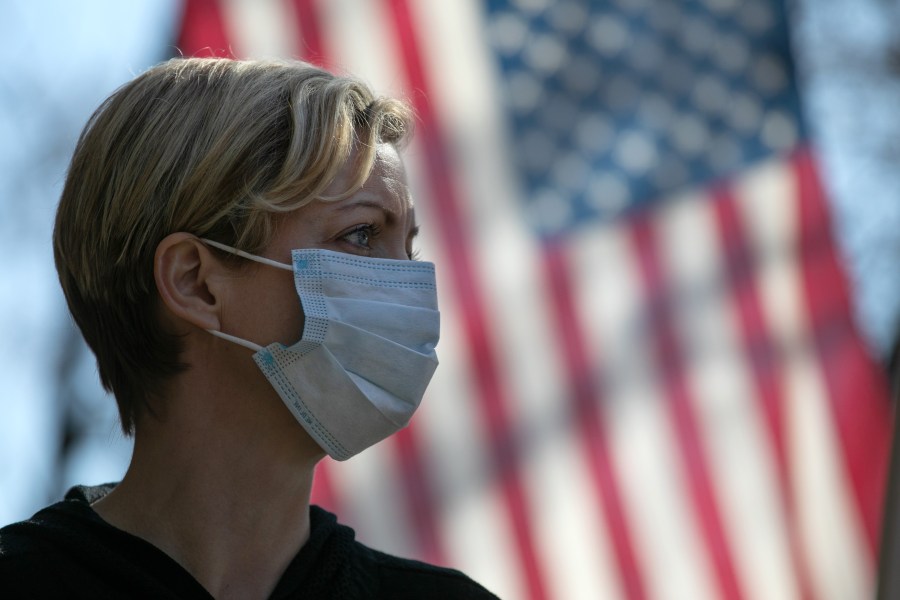
Hughes: We are seeing pandemic fatigue right now. It is a reality from coast to coast and everywhere in between. This pandemic is like nothing that we have ever seen in our lifetimes and I pray, we never see it again. With that said, people are turning to you all for answers and for hope and for the path forward. What is your message to the American people? What is the message to families, right now, as we take this next step?
Dr. Birx: I have a complicated family because I have 1-year-olds to 96-year-olds. So that just shows you how the message has to be able to be reached to every single one of those individuals. What I tell them, we’re gonna do this together. We’re gonna make it to the end to when we can get a vaccine and they can get a vaccine and they can have immunity from the vaccine and then we can do those things again. Because right now, we know the virus is still out there, you can see the cases rising. You can see where it moves. It moves because it moves in the communities and it moves between individuals. This virus can’t do anything outside of our bodies. It is dormant, more or less, outside of our bodies. If it doesn’t use our cell machinery, it can’t replicate itself. So, it needs us. And we have to prevent it from having us. And I think we know that simple approach. I know it sounds so common sense, that it almost seems not science, but it is science. Each one of these items, wearing a mask, has science behind it. Physical distancing, science behind it. Washing you hands, science behind it. Avoiding indoor gatherings outside of your bubble, which is probably outside of your household at this moment in time. If you’re in a county with rising cases, you need to take all of those into account, religiously, continuously. I know it’s hard, I’ve been on the road since the end of June. But you can make it and do these changes.
“This virus can’t do anything outside of our bodies. It is dormant, more or less, outside of our bodies. If it doesn’t use our cell machinery, it can’t replicate itself. So, it needs us. And we have to prevent it from having us. And I think we know that simple approach. I know it sounds so common sense, that it almost seems not science, but it is science.”
DR. DEBORAH BIRX, CORONAVIRUS RESPONSE COORDINATOR FOR THE WHITE HOUSE CORONAVIRUS TASK FORCE

Hughes: Secretary are you hopeful?
Azar: I’m very hopeful but my message to the American people we appreciate how much people have given and the sacrifices they have made over the last nine, ten months. My father died and I wasn’t able to be with him in the months before he died. I have not been able to mourn his loss in any type of communal setting his life or anything so I know the pain and the sense that everyone has and they have given so much through this unprecedented pandemic, but my message would be we were in such a better position now than we were even six months ago in terms in the ability to treat people, to prevent the spread of disease, our knowledge of the disease and the tools that we will have. We’re going to be in such a good place and it really is weeks, months away that we will have…antibodies, vaccines to help stop the spread of the disease and eventually get us to where we can move beyond COVID, but right now we all need to do our part. We ask you to hang in there with us, because it doesn’t matter open state, close state, red state, blue state closed country, open country, the disease spread is identical across the world of western democracies right now. Cases are increasing because people have gotten tired and they are not following those basics of public health. Wash your hands, watch your distance, wear your face coverings, when you can’t watch your distance and avoid settings where you cannot do those things. If we do those things we bridge to that day that has me optimistic thanks to President Trump’s leadership. It’s really this historic moment when we will have novel therapeutics and vaccines within months of novel coronavirus hitting our shore. It’s never happened in human history before that we have harnessed the power of a biopharmaceutical. Innovation like this and we’ll have supplies to treat and prevent disease for the American people so bare with us, hang in there with us because the coming weeks, months are so hopeful in terms of our ability to get back to school, back to work, back to worship, back to healthcare and back to reconnecting our civic, political, community life and be with friends.
“My father died and I wasn’t able to be with him in the months before he died. I have not been able to mourn his loss in any type of communal setting his life or anything so I know the pain and the sense that everyone has and they have given so much through this unprecedented pandemic.”
Alex Azar, United States Secretary of Health and Human Services
Hughes: Mr. Secretary, my condolences to your family and the loss of your father. Dr. Adams, I will give you the final word and the final message.

Dr. Adams: What I would say to the American people is to be vigilant, but have hope. And that’s the message I give to my three kids to my family. Be hopeful, because we are weeks to months away from having a vaccine. He hopeful, because we know how to keep this virus, under control and we’ve seen it happen in Arizona, in New York. Wearing a mask, washing your hands and watching your distance can help us drive this disease into the ground. Be hopeful because if you do, unfortunately, get coronavirus, you have a much higher chance of surviving it now, thanks to innovations and the way we treat people into therapy such as Remdesivir, steroids and monoclonal antibody. Be hopeful that she can have spring break next year and that you can have in-person graduation, but also know that that is only going to happen if we pull together. So, we are in the end of this race, I think, and we just have to keep running. We’ve got to keep running through the finish line until we get a vaccine and we get enough for everyone who wants to get a vaccine to be able to be vaccinated. But we’re so close. And we just can’t afford to let up, because that will mean lives lost unnecessarily. So be hopeful, be optimistic. But stay vigilant and get your flu shot this year, incredibly important. It’s already something that we have available to us, that can save lives and lower the stress on our health care workers, and actually help keep us open.
“What I would say to the American people is to be vigilant, but have hope. And that’s the message I give to my three kids to my family.”
JEROME ADAMS, SURGEON GENERAL OF THE UNITED STATES










